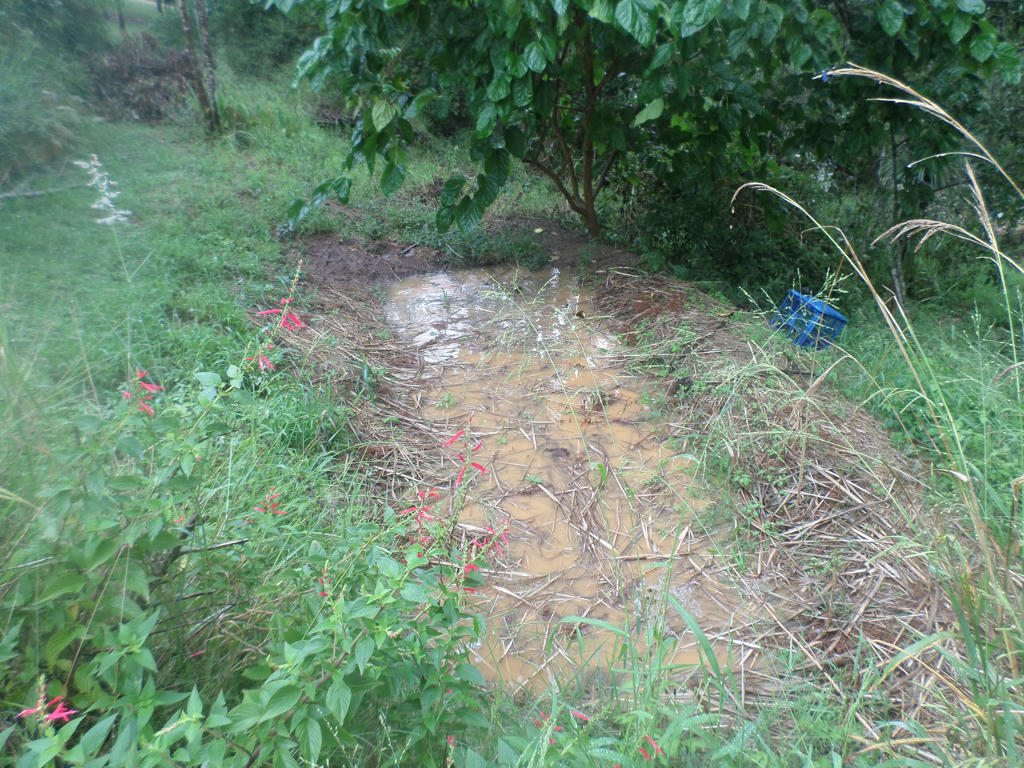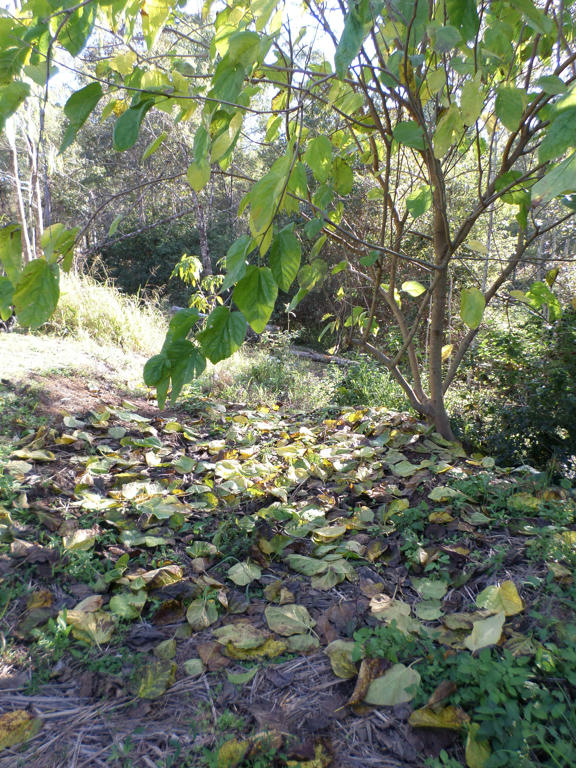They take turns at the bird bath, and run in consecutive shifts, at visiting favourite trees. Insects don't stand a chance, seeds are spread abundantly, and their many services are invaluable in all that they do! I listen for the birds every day, and even had some close encounters.
Who's a pretty boy?
This colourful guy, is a male King Parrot. He's been so tame over the years I've gotten to know him - letting me stand meters away, to take this photo. Then when I go to walk back inside the house again, he follows me to the outside trellis, just near the back door. I've long suspected he belonged to someone at one stage. It was confirmed recently.
Not long after taking this photo, he followed me to the back trellis again, and turned his head the other way. Sadly, he was missing an eye. But that hasn't stopped him from pairing up and having kids of his own. There's a wildlife rescue centre, not far from here. I imagine he's one of their rescues, and successfully released back into the wild. He's such a charmer though, and completely won me over.
He loves to eat native seeds, but especially adores our sunflowers and pigeon pea seeds. How can I begrudge him?
The fast and timid
The Pale-headed Rosella, often visits our backyard in pairs too. This boy is also enjoying the back trellis, but is a lot more skittish than my King parrot, friend. He just spotted me at the back door, taking his photo, and flew off, not long afterwards. Like the King parrot, they like to eats seeds, fruits and flowers. Additionally, they will eat insects and their larvae.
So these are handy to have around for insect control, and they're just plain pretty. Not that they hang around long, for me to admire them.
Enjoying the sun
We have a plethora of carnivorous birds who love to regularly visit our yard as well. This is not a crow, although we do have those as well. The crow has adapted to cull the Cane-toad population here, by flipping them over and eating them from the underside - avoiding their poisonous glands on the back. So very handy to have around too.
The fellow above however, is a Pied Currawong. They're mostly carnivorous, but will supplement their diet with berries and other fruits as well. They seem to have taken a liking to my Kumquat tree, when it's in fruit - but they also raid the mulberries. So they're somewhat of a cleanup crew for fruit, and do an invaluable service of keeping insects and caterpillars under control.
The stealth bomber
This is my All-star, of the backyard carnivorous birds. Not only do they sound hilarious, but that awesome beak!! It will tackle a snake for breakfast. Not the big ones of course, but the newly hatched and juvenile snakes are fair game. Which helps to keep the larger snakes that make it to our yard, under control.
So naturally, I love to hear a new batch of fledgling kookaburras, being taken out by their parents, for a hunting expedition. If you've ever heard a juvenile kookaburra squabbling with it's siblings - it sounds like someone is being strangled. So that iconic laugh, starts out rather awkward.
Beguiling
This Pheasant Coucal, is one I have admired from afar, for a long time. They have a reputation for being elusive. They prefer to hunt on the ground, and hide in long grasses to pounce on their prey. Which happens to be insects, frogs, lizards, eggs and young of birds. Sometimes, even small mammals. I really hope it's the mice!
I have to say, they're a very fascinating bird. While they can fly and often will, if taken by surprise, they'd rather spend all their time on the ground. And as such...
Hunting mode
...they walk somewhat like a raptor. Low to the ground and streamlined - head to tail. That camouflage is amazing too. This is why I always take them by surprise in the garden. I never see them, until they're flying up into the trees. Which often takes me by surprise, too.
The only reason I managed to capture this one on camera, is because it came towards the verandah. Luckily, I already had my camera in that room. Otherwise I would have missed my opportunity. As they never stay in one area for long.
I haven't been able to capture an image of the brown quails who often frequent, because they are so elusive too! But know that each bird species that visits our yard, is making an important contribution. They keep the natural system in balance, act as propagators and their daily routines - encompassing the rearing of their young and visiting the Gully Grove larder, are more enjoyable to watch and listen to, than a clock on the wall. They tell me about the seasons, and how to set my own daily compass.
Are you a bird-watcher in your garden too? Have any favorites?




































